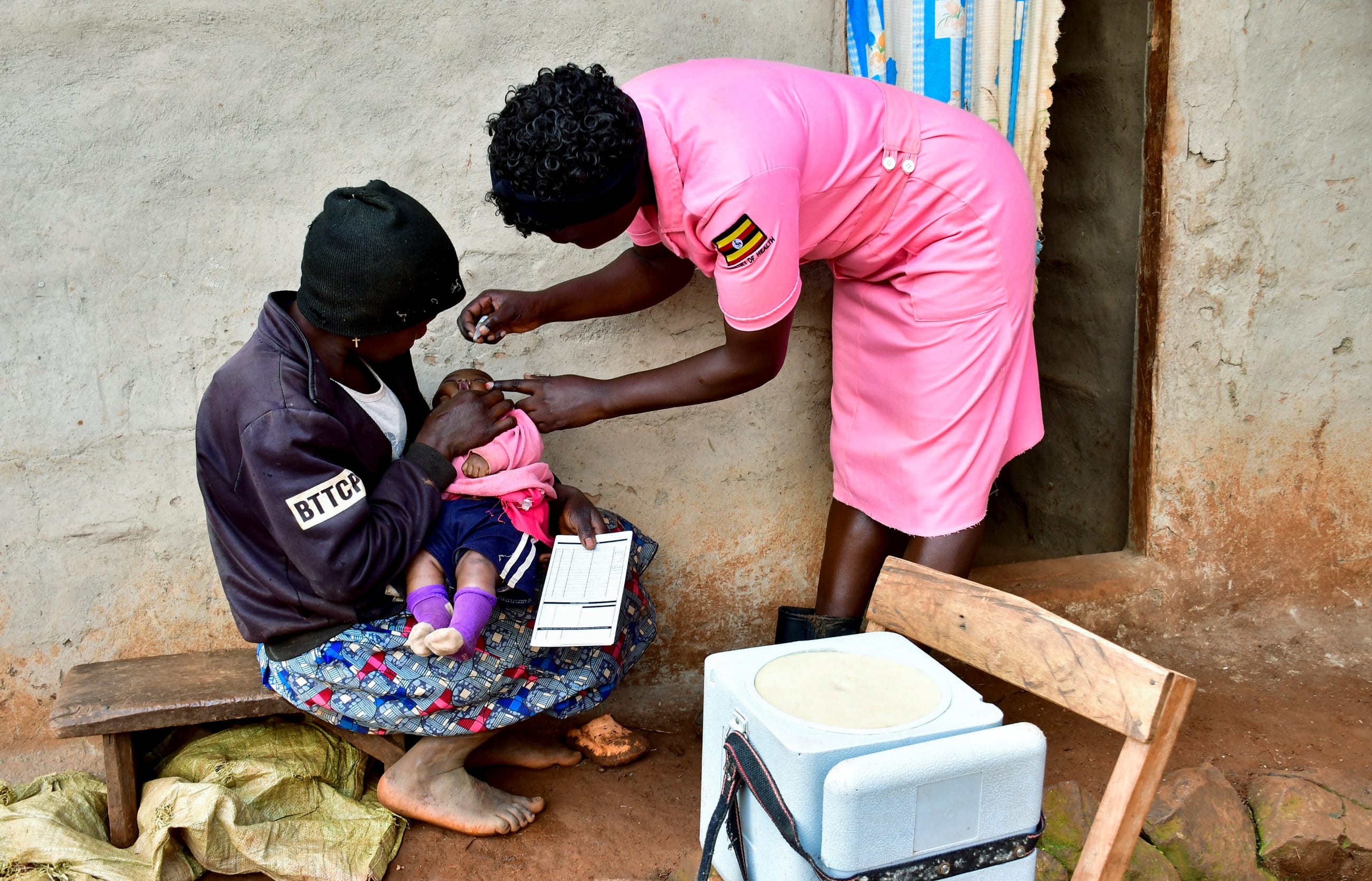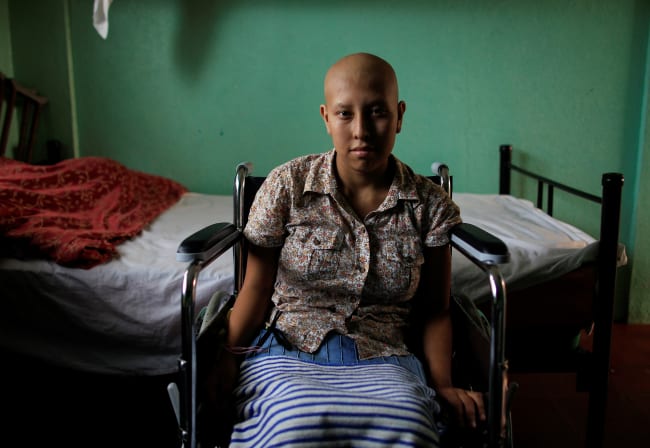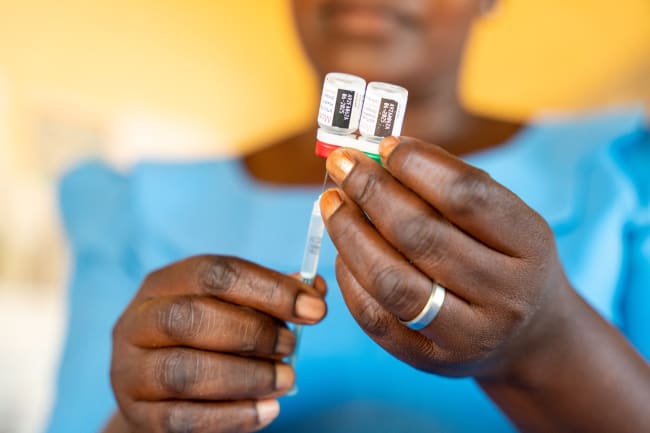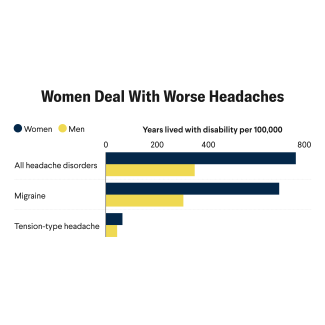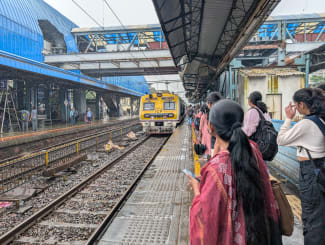Following several months of uncertainty in the wake of President Donald Trump's January 2025 executive order calling for a foreign aid review—and subsequent actions that significantly reduced U.S. global health funding and programming—the September release of the America First Global Health Strategy offers the first roadmap for what comes next for the President's Emergency Plan for AIDS Relief (PEPFAR) and other global health programs the United States supports financially.
The strategy outlines three broad pillars—making America safer, stronger, and more prosperous—and, alongside global health security, focuses on four main infectious disease areas: HIV, tuberculosis (TB), malaria, and polio. The plan anchors future U.S. engagement to time-bound, bilateral agreements with partner countries and sets a goal of decreasing U.S. funding and moving most countries toward full self-reliance over the course of the agreements. Given that historically the United States has been the world's largest donor to global health, this next phase stands to further reshape the global health landscape beyond this year's actions and, therefore, affect the health of millions worldwide.
As stakeholders await additional details on these plans—expected at the end of 2025 or early in 2026—and building on analysis and commentary published in Think Global Health, we identify several key issues and questions that lie ahead.
What Is the New Baseline for Service Capacity and Where Are the Gaps?
Early in 2025, the State Department's stop-work order, dissolution of the U.S. Agency for International Development (USAID), and cancellation of most global health projects resulted in significant disruptions in service delivery across the world. An analysis, conducted shortly after the stop-work order was issued on January 24, found that 71% of PEPFAR implementing partners reported the complete cancellation of at least one category of activities, including in the areas of HIV testing and treatment. Program partners also reported 50% staff reductions, and only 14% said they could maintain operations for one month or longer without PEPFAR funding. A survey of 108 World Health Organization country offices [PDF] documented moderate to severe disruptions to TB and malaria services, including for essential commodities, in many countries.
No comprehensive assessment across countries of remaining U.S.-supported program and service capacity has been carried out
Although remaining projects have been allowed to continue, they have had to do so within tighter guidelines and with fewer resources, and, even recently, service disruptions in some areas continue, including for HIV treatment [PDF] and malaria commodities. Other services have been discontinued altogether, including many HIV prevention activities and much maternal and child health programming, which not only have direct impacts in those areas but also could carry broader implications for reaching the goals stated in the America First Global Health Strategy. For example, malaria goals could be compromised in the absence of a broader maternal and child health platform.
To date and to the authors' knowledge, no comprehensive assessment across countries of remaining U.S.-supported program and service capacity has been carried out. This dearth makes it difficult to assess
- whether capacity to achieve the goals of the new strategy is sufficient,
- what the new baseline level of global health service delivery is at this juncture,
- where the biggest gaps are (in which countries, for which services, for which populations), and
- how government health systems may have been affected by U.S. reductions.
Can Early Warning Indicators Help Guard Against Backsliding?
The America First Global Health Strategy calls for a major transformation in how U.S. global health efforts are carried out. Among the most significant proposed changes are the development of government-to-government agreements and a rapid reduction in funding that is not focused on commodities or health-care workers—as well as more measured reductions in those areas.
The strategy also states that the United States remains committed to contributing to global goals for HIV, TB, malaria, and polio. The proposed transformation, however, is not without risk to these goals, particularly in the near to middle term.
Early warning indicators could help guard against backsliding, especially in the initial phase. For HIV, tracking such indicators as retention in care, loss to follow-up, and changes in treatment initiations could alert officials and others to challenges during the transition, before such shifts disproportionately affect HIV outcomes. Similarly, malaria programs could report on risks to initiating timely seasonal malaria campaigns as well as changes in bed net coverage, and early warnings for TB could include changes in case detection and notification rates.
Across all programs, monitoring the risk of supply chain stock-outs (shortages in availability of needed commodities) could also provide an important warning signal before stock-outs actually occur.
What Are New Opportunities for Commodity Pooled Procurement?
The new strategy focuses heavily on commodities, noting that the United States spends approximately $1.3 billion per year directly on commodities for HIV, TB, malaria, and polio (as well as additional funding for commodities through general contributions to the Global Fund to Fight AIDS, Tuberculosis and Malaria and, for vaccines, through contributions to Gavi). The strategy states that the United States will continue to cover 100% of current commodity costs for HIV, TB, malaria, and polio in fiscal year 2026, but will reduce funding thereafter.
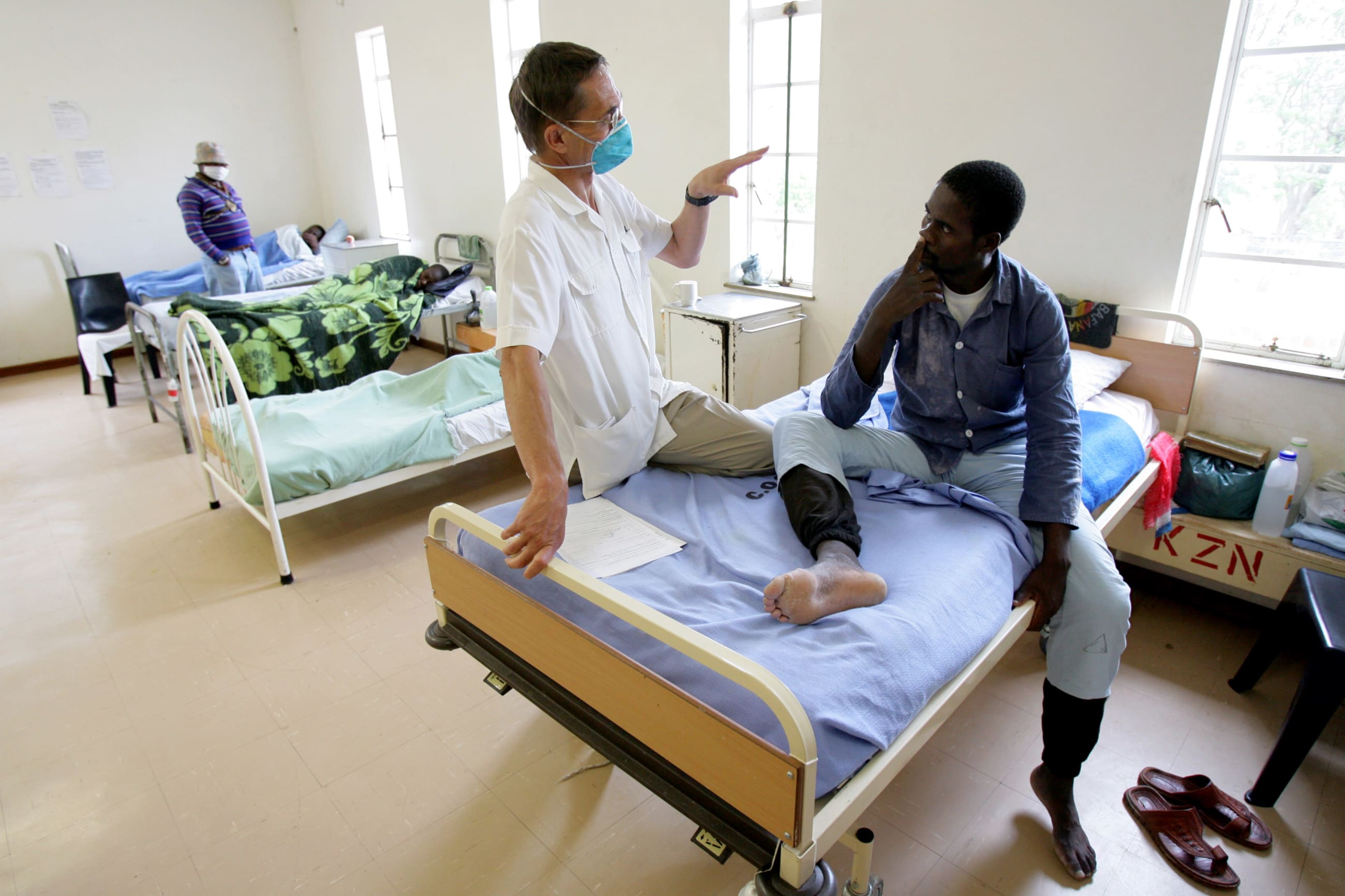
To support this work, the United States will seek to establish or contribute to one or more pooled procurement mechanisms. Although the U.S. government already contributes to some such mechanisms now, most of its procurement to date has been carried out through U.S. stand-alone channels. Shifting to pooled procurement could offer several advantages, including reduced prices, lower administrative burden, more predictable markets, streamlined quality assurance, and, ultimately, greater access.
Whether the United States chooses to establish a new pooled procurement mechanism, shift more of its procurement to existing ones (such as the Global Fund), or support emerging mechanisms in Africa will be key decision points. Understanding the strengths and weaknesses of these mechanisms, their geographic scope, range of commodities offered, eligibility criteria, and other features could aid in this decision-making process.
How Will Graduation Policies and Timelines Be Designed?
The America First Global Health Strategy outlines the intent to develop time-bound, multiyear bilateral agreements with 71 U.S.-supported countries with a goal of transitioning the majority to full self-reliance during the term of the agreement.
This will be a new approach for the United States, which, with limited exceptions, has not used formal graduation criteria for PEPFAR or its other bilateral global health programs. As it embarks on this path, the experiences of other institutions could be instructive in assisting the United States in balancing predictability, sustainability, and flexibility while reducing its funding commitment over time.
An April 2025 KFF review of several institutions, including the Global Fund, Gavi, and the Millennium Challenge Corporation, identified key elements and characteristics of their graduation policies to help inform U.S. efforts. Among the main findings are that their time lines are long, extending several years beyond when grant periods end and, in most cases, are designed to be clear and predictable. Most use country income to determine a threshold for ending assistance but some use other, non-income-based criteria, such as epidemiologic data and other health factors. Several adjust their support downward as a country's income rises but before a nation officially graduates to self-reliance. A subset of institutions allow for reeligibility and exceptions for emergencies and other specified situations.
What Will a Cofinancing Policy Look Like?
The strategy posits that countries will be required to increasingly coinvest as part of their bilateral health agreements with the United States, introducing another new feature for U.S. assistance. Indeed, although U.S. law has long mandated cofinancing requirements for recipients of foreign aid, these have rarely been explicit, clear, or designed to progressively increase over time.
As true of graduation policies, cofinancing models to learn from already exist. A KFF review of six institutions identified several key features, all of which link cofinancing policies to organizational missions, priorities, or project objectives (e.g., requiring that country cofinancing supports the mission). Some institutions tie cofinancing requirements to country income level, amounts rising as country income increases, and require an increasing share of resources to be provided over time. Most of the cofinancing models allow for waivers of requirements in exceptional circumstances, typically for fiscal or humanitarian crises, and a subset have policies in place to address noncompliance.
What Risks Could Emerge From Rapid Reduction of Nonfrontline Costs?
The America First Global Health Strategy makes a distinction between frontline (commodities, frontline health workers) and nonfrontline (technical assistance, program monitoring, overhead) costs, noting that the latter account for 60% of current funding. As part of the strategy, the United States intends to rapidly decrease nonfrontline costs it identifies as inefficient and unsustainable, asserting "substantial opportunity to materially reduce these technical assistance, program management, and overhead costs without materially impacting outcomes."
Evidence supports this view. A recent KFF and Boston University analysis found that PEPFAR funding for nonfrontline services was negatively correlated with health outcomes, in contrast to service delivery support, suggesting that at this point in PEPFAR's trajectory, these investments may no longer be yielding further gains. At the same time, risks to rapidly reducing this spending are possible and some spending in this area will be important for aiding country transitions. Further analysis of the correlation between specific activities within this larger category and HIV outcomes could shed light on this question and provide a more nuanced understanding of the role that nonfrontline investments play.
How Will Key and Vulnerable Populations Be Reached? What Is the Risk to Last Mile Gains?
Historically, in addition to providing HIV treatment and prevention services, PEPFAR has sought to address the needs of key and vulnerable populations (including men who have sex with men, adolescent girls and young women, people who use drugs and others) through stand-alone or targeted programming such as community testing, the DREAMS Program, and support for community-based organizations. The new strategy is silent on such programming and recent changes to PEPFAR suggest a much more limited approach.
However, because the majority of new HIV infections [PDF] occur among key and vulnerable populations and their partners—groups facing barriers that heighten risk—reaching them remains important for helping stem the tide of the HIV epidemic and last mile gains (those needed to fully reach and sustain epidemic control). Our KFF and Boston University analysis found that such investments, which represent a small share of PEPFAR spending, were strongly associated with improvements in HIV outcomes. In addition, the association was strongest in countries closer to epidemic control, suggesting their importance for last mile gains. Given these findings, and the limited likelihood of domestic uptake, continued U.S. support—directly or through partnerships—could help further control the HIV epidemic.
Ongoing support for such targeted investments takes on added importance because the strategy will also aim to integrate across disease areas and with country health systems, which, though offering several advantages, could have more adverse effects on more vulnerable groups [PDF]. Whether the United States seeks to address the needs of key and vulnerable populations, however, or leaves this up to countries remains unknown, but will likely carry implications for reaching the goals of the strategy and the last mile of sustained epidemic control.
The America First Global Health Strategy marks a significant shift in U.S. engagement. Although it emphasizes country self-reliance and bilateral agreements, it raises important questions about service continuity, financing, and access. How these changes are implemented will influence not only the trajectory of U.S. support but also the ability of partner countries and the broader global community to sustain progress against HIV, TB, malaria, polio, and emerging health threats. Careful attention to the issues outlined above could help mitigate risks, preserve gains in global health, and support a smoother transition to new models of cooperation.

